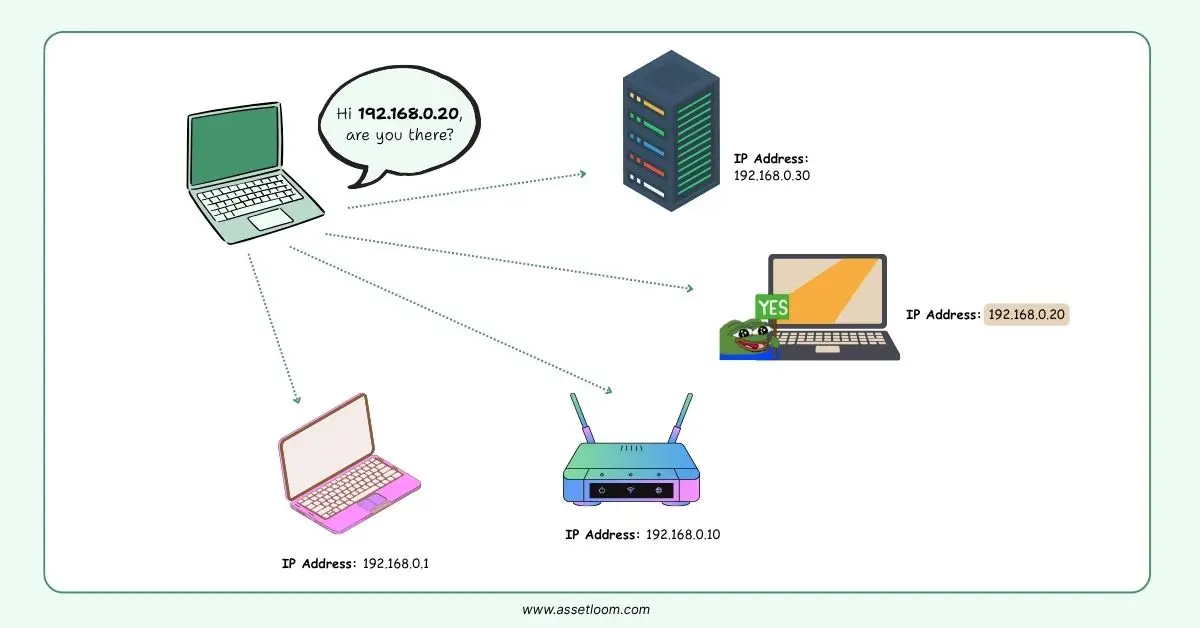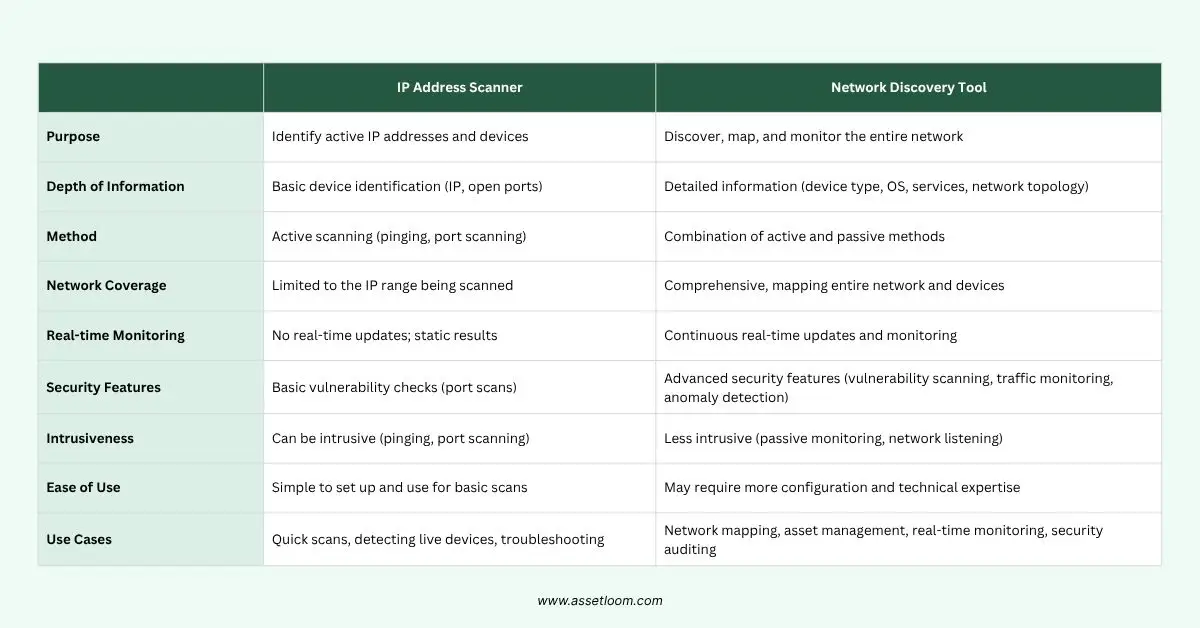How Does an IP Address Scanner Work
Learn how an IP address scanner works, its benefits & drawbacks, business use cases, and how it compares to network scanning tools.
Let's face it: most businesses operate in the dark when it comes to their networks. Your company might have dozens, if not hundreds, of devices connected to your network, but how well do you really know what’s happening behind the scenes? It’s easy to assume everything is running smoothly until a device goes rogue, a security breach occurs, or you can’t figure out why your network is suddenly crawling.
That’s where an IP address scanner steps in. This simple yet powerful tool helps you take control of your network, discover hidden devices, and avoid the very real threats lurking in your network. Yet, despite its importance, many businesses still overlook its role. Are you one of them?
In this article, we’re going to break down how an IP address scanner works, why it’s a must-have tool for every business, and how ignoring it could be costing you more than you think.
What is an IP Address?
Every device connected to your network – from computers and phones to printers and routers – has a unique IP address. Think of it like a digital home address for each device. Without it, your devices wouldn’t be able to communicate with each other. Each time your computer sends an email or connects to the internet, it uses its IP address to do so.
But what happens when there’s no one looking after these "addresses"? Devices can go undetected, unauthorized users can slip in, and your network’s performance can take a hit. That’s exactly where an IP address scanner takes action.
What is an IP Address Scanner?
An IP address scanner is a tool designed to scan a range of IP addresses on a network to see which ones are active and identify the devices associated with those IPs. It will check every address in that range to see which ones are occupied, what devices are connected, and whether any strange or unknown devices are lurking around.
Let’s say your office network includes IP addresses ranging from 192.168.0.1 to 192.168.0.50. An IP address scanner will check every address in that range to see which ones are occupied, what devices are connected, and whether any strange or unknown devices are lurking around.
For example, you run an IP address scan and find that 192.168.0.15 is being used by a new device – one you didn’t know about. It turns out it’s a personal laptop that an employee connected without approval. Without the scanner, this unauthorized device could have gone unnoticed.
The tool helps businesses discover:
- Which devices are connected to the network
- The types of devices (e.g., computers, printers, phones)
- Open ports that might indicate running services
- Potential security risks if unauthorized devices are detected
How Does an IP Address Scanner Work?
The process of an IT address scanner is not as complicated as you might think.

- Define the Range: The first step is to specify the range of IP addresses you want to scan.
- Send “Ping” Requests: The IP scanner sends out "pings" – essentially little messages – to each IP address in the range, asking, “Are you there?”
- Check Responses: If the IP address is active, it responds. The scanner then notes down the device’s IP address, its name, and sometimes even details about the device (like its type or services it’s running).
- Generate a Report: After completing the scan, the tool produces a report, showing you all the devices that are connected, their IP addresses, open ports, and other details.
Why Should Businesses Care About IP Address Scanners?
1. No More Guessing
Most businesses don't realize how many devices are connected to their network. You might think you have control over the devices, but every day new ones are added, from employee laptops to smart devices, all with different IP addresses. Over time, it becomes impossible to know what’s happening unless you have a scanner tracking every device.
Failing to track these devices always leads to chaos. Unauthorized devices using your network’s resources, security vulnerabilities, and a constant guessing game of which device belongs to whom.
2. Troubleshooting Network Problems, Because Time is Money
When network problems arise, every second counts. Is it a slow printer? A misbehaving computer? Or a device hogging all the bandwidth? The last thing you want is to waste time hunting down which device is causing the issue.
An IP address scanner helps you pinpoint the problem quickly. For example, if your internet connection is slow, the scanner can show you if any devices are eating up all the bandwidth to take prompt action.
3. Unauthorized Devices Are Everywhere
If you think that only authorized employees are connecting to your network, think again. Unauthorized devices can easily slip in. It may be a guest who connects to your Wi-Fi or a rogue devices from a former employee; these devices pose serious security risks.
Unauthorized devices might not have the same security controls (such as antivirus, firewalls, or encryption) as authorized ones. This means they could be used as entry points for hackers to gain access to sensitive business data, like financial records, customer information, or intellectual property.
An IP address scanner helps catch these intruders by flagging any devices that don’t belong.
4. Easier IT Asset Management
Managing your company’s hardware can be a logistical nightmare if you don’t know exactly what’s on the network. An IP address scanner provides a detailed inventory of all the devices connected to your network.
For example, your company might have 50 computers, 10 printers, and 3 servers connected. By running a scanner regularly, you can generate an updated list of devices and ensure that you have accurate records for inventory, maintenance, or audits. Without this, you're just guessing about what’s plugged in and where.
Learn more about Automated Network Scanning Tools
IP Address Scanner: The Drawback
While IP address scanners are valuable tools, they are not without their limitations. Here are some potential drawbacks of using them:
1. Limited Scope
IP address scanners focus primarily on scanning IP addresses and detecting devices that are active on the network. They identify live hosts, open ports, and sometimes basic device details (like device name or type). However, they don’t provide the full picture of your network’s topology or all the services running on those devices.
2. Lack of Device Detail
An IP address scanner might tell you that an IP address is active, but it may not always provide comprehensive details about that device. For example, it may not show whether the device is a server, router, or smart device, or what software it’s running.
3. Limited Security Features
IP address scanners focus mainly on identifying devices and checking for open ports. While they can be useful for detecting vulnerabilities, they typically don’t offer vulnerability scanning or detailed audit trails of network activity.
Network Discovery Tools vs. IP Address Scanners
Network discovery tools, on the other hand, can provide a deeper level of insight, showing you the interconnections between devices, their roles, and any services they are running.
To understand when to use an IP address scanner versus a network discovery tool, let’s compare their features, benefits, and use cases:

Read more: CMDB Discovery Tools: What They Are and Why Your IT Team Needs One
Conclusion
By now, it should be clear that an IP address scanner is not just a nice-to-have tool – it’s a necessity for businesses of all sizes. Whether you’re dealing with a small office or managing a vast enterprise network, keeping track of devices, ensuring security, and maintaining compliance all depend on having accurate, up-to-date information about your network.
If you’re still not using an IP address scanner, you might want to reconsider. After all, how much longer are you willing to fly blind when it comes to your network? The cost of ignoring this tool is simply too high.
Are you ready to take control?

Subscribe for Expert Tips and Updates
Receive the latest news from AssetLoom, right in your inbox.


